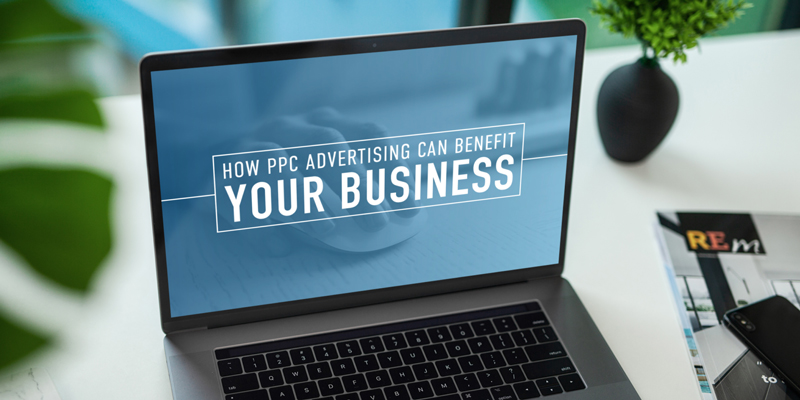How to Master PPC Advertising
Are you using PPC advertising to promote your business? If not, here's how you can master the art of online ads (and convert more leads).



Do consumers really hate disruptive advertising?
Sure, they do. The millions of downloads for popup bloggers indicates a dislike for unsolicited advertisements. Yet, we also see consumers are susceptible to clicking on pay-per-click ads found on websites, search engines, and social media.
What's the difference?
Popup ads are irrelevant. PPC ads target specific users based on their search habits, region, and other factors.
Just look at the rise in sentiment for PPC advertisements:
Between 2016 and 2017, 7% of people thought poorly of PPC ads. Then this dropped to 1% between 2017 and 2018.
We also find that PPC ads bring around 50% more lead conversions compared to organic traffic.
If you're wondering how you can boost your visibility and revenue quickly using PPC ads, then you'll need to master PPC advertising.
Here are the steps to mastery.
Learn Which Metrics to Monitor for PPC Advertising
It's easy to get carried away with the wrong stats when you're monitoring your PPC advertising campaigns. You'll be tempted to look at the incoming traffic, and when there's a significant spike, you'll view it as a win.
However, if they're not converting, then this is nothing but a fluffy statistic. So what should you be monitoring to determine the success of your campaigns?
Here's an overview:
- Click-through-rate or CTR (this tells you how many people are clicking on your ads)
- Cost-per-click or CPC (identifies how much you're spending to acquire leads/traffic)
- Return on investment or ROI (determines how much you're getting back from your investment)
- Quality score (tells you how relevant your keywords are)
With these stats, you can ensure you're not overspending on ads or driving in irrelevant traffic.

Start with a Single Network
There are several ad networks you can use to build PPC advertising campaigns. But don't get overzealous with your strategy -- begin with one network.
The most popular is Google Ads. It's not uncommon for small business owners to start here. It's where most people go to do research anyway, so it makes sense to do so.
Once you get comfortable here, you can start using other ad networks, such as:
- Facebook Ads
- Bing Ads
- AdRoll
- RevContent
- Bidvertiser
- BuySellAds
Use Ad Retargeting to Capture Quality Leads
One of the pitfalls of PPC advertising is driving clicks from irrelevant consumers. You don't want to waste money on your campaigns, so you'll need to ensure your ads are highly targeted.
One way to achieve this is by using ad retargeting. Surely, you've been targeted by these adverts.
For example, you visit an online store, look at a product, and then leave. Now, every website you visit, you see this product being advertised. These are retargeted ads.
This works because it's targeting folks who've already shown interest in your products or services.
Analyze Your Competitors' Ads
There's a lot you can learn about your PPC advertising campaign by analyzing your competitors' ads. If you're wondering why your ads aren't converting, then maybe it's something you're doing wrong.
Your top competitors have likely figured out what works. Take a look at the keywords they're using, the copy they're writing, and the headlines they use.
Compare them to your own ads to see how you can improve them.
Split Test Your Ad Copy
Aside from analyzing your competition, you'll want to also examine your own campaigns. What's causing certain ads to convert higher than others?
One way to find out is to split test your ads. Change only one element of the ad so you can identify the exact reason for the success (or failure).
For instance, you can use two different headlines and the exact same copy and offer.
Do this for different areas of your ads, and be sure to take notes.
Make Your Ads Mobile-Friendly
You don't have to worry about your ads displaying the right size because ad networks will take care of this for you. Instead, you'll need to ensure you have mobile accessibility for your PPC advertising.
For example, adding the click-to-call links for your business phone number.
You can do the same for your business address -- make it easy for mobile users to click your address and go straight to Google Maps to get directions.

Use Ad Extensions to Boost CTR
Ad extensions are additional information attached to your PPC ads. It's good to have these included so that users are more likely to click on your ads.
For example, pricing or deals you're currently offering for the product you're advertising. Here's a look at several ways you can use extensions to make your PPC advertising more enticing:
- Add a map that directs users to your location
- Add product details like ratings and prices
- Use sitelinks to point users to specific pages on your site
- Add deals extensions during shopping season (Black Friday, etc.)
- Use review extension to show positive feedback from customers
If you happen to make it to the top of the search results, extensions will help to boost your CTR.
Become a PPC Advertising Master
Organic traffic is great, but you don't want to overlook the power of PPC advertising.
The idea is to use the two together to improve your traffic and conversions.
It should be a part of your local SEO strategy, which should include claiming your Google My Business listing.
You can use GoSite to claim, create, and edit your listings across 70+ business directories. By using PPC ads and business listings, you can push your visibility up to the top of search results.
Ready to see how it works? Then download the GoSite mobile app for free today!

%20(1)%20(1).png?width=340&name=Group%2012%20(2)%20(1)%20(1).png)



